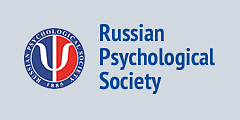Psychometrics
-
Cross-Language Validation and the Factor Structure of the Social-Emotional Competence Questionnaire for Pakistani Adolescents
-
An Independent Evaluation of the Psychometric Properties of the Russian Version of the Pediatric Daytime Sleepiness Scale (PDSS)HTML3020“ CITE
Zakharov, I.M., Ismatullina, V.I., Kolyasnikov, P.V., Marakshina, J.A., Malykh, A.S., Tabueva, A.O., Adamovich, T.V., Lobaskova, M.M., Malykh, S.B. (2023). An Independent Evaluation of the Psychometric Properties of the Russian Version of the Pediatric Daytime Sleepiness Scale (PDSS). Psychology in Russia: State of the Art, 16(3), 206–221. DOI: 10.11621/pir.2023.0314
copied
-
Psychometric Analysis of Two Brief Versions of the CERQ in the Argentinean population: CERQ-18 and CERQ-27PDF HTML3853“ CITE
Dominguez-Lara, S., Moretti, L., Flores-Kanter, P.E., Muñoz-Navarro, R., Medrano, L.A. (2023). Psychometric Analysis of Two Brief Versions of the CERQ in the Argentinean population: CERQ-18 and CERQ-27. Psychology in Russia: State of the Art, 16(1), 26–43. DOI: 10.11621/pir.2023.0102
copied
-
The Development and Psychometric Characteristics of the “Virtual Identity of Social Media Users” Test
-
Hartmann’s Boundaries Questionnaire (short version by D.Rawlings): psychometric properties and the structure in a Russian-speaking sample
-
Translation, Adaptation, and Validation of a Multitasking Instrument in the Context of Collectivist Asian Culture









